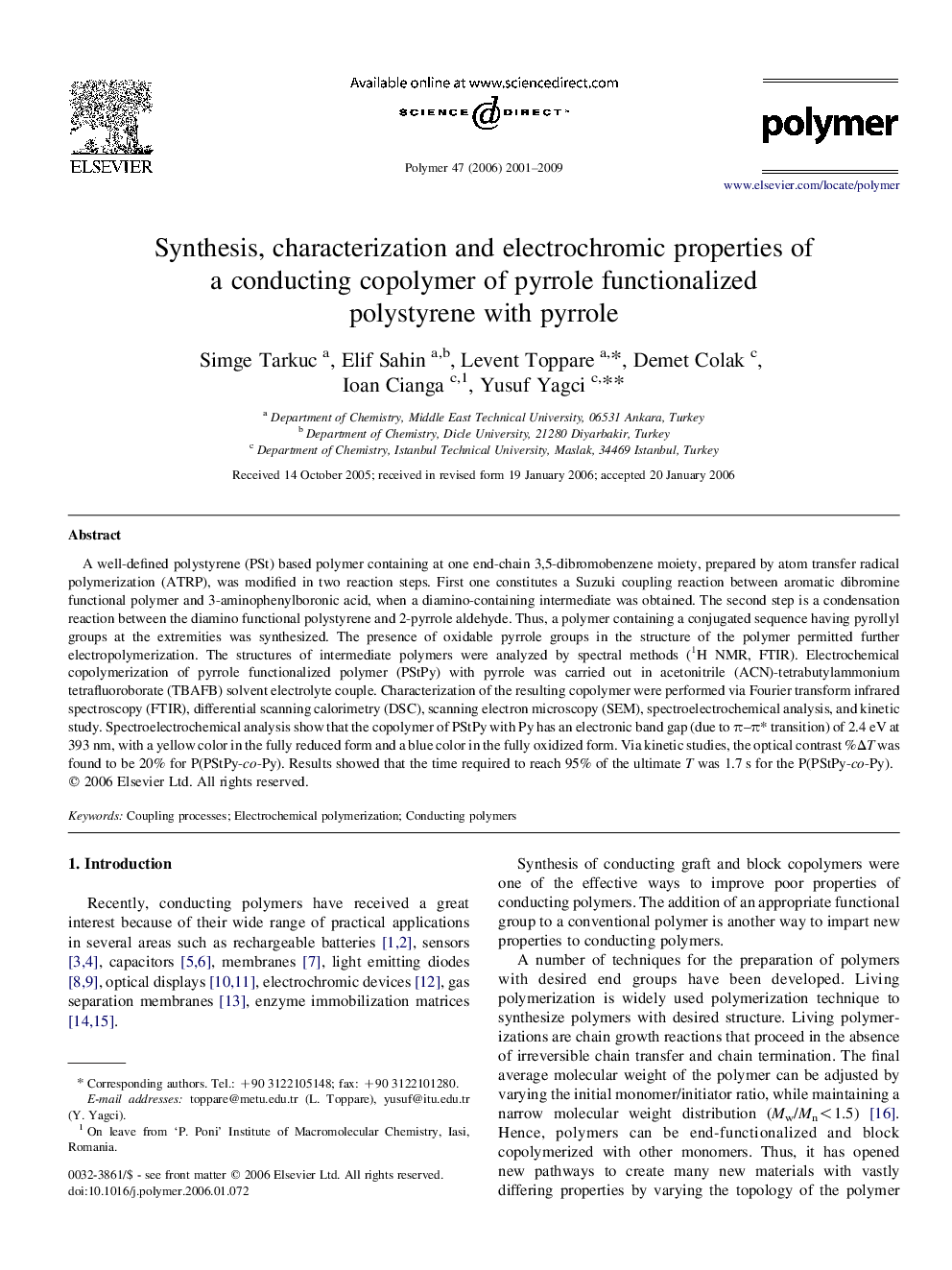| Article ID | Journal | Published Year | Pages | File Type |
|---|---|---|---|---|
| 5187320 | Polymer | 2009 | 9 Pages |
A well-defined polystyrene (PSt) based polymer containing at one end-chain 3,5-dibromobenzene moiety, prepared by atom transfer radical polymerization (ATRP), was modified in two reaction steps. First one constitutes a Suzuki coupling reaction between aromatic dibromine functional polymer and 3-aminophenylboronic acid, when a diamino-containing intermediate was obtained. The second step is a condensation reaction between the diamino functional polystyrene and 2-pyrrole aldehyde. Thus, a polymer containing a conjugated sequence having pyrollyl groups at the extremities was synthesized. The presence of oxidable pyrrole groups in the structure of the polymer permitted further electropolymerization. The structures of intermediate polymers were analyzed by spectral methods (1H NMR, FTIR). Electrochemical copolymerization of pyrrole functionalized polymer (PStPy) with pyrrole was carried out in acetonitrile (ACN)-tetrabutylammonium tetrafluoroborate (TBAFB) solvent electrolyte couple. Characterization of the resulting copolymer were performed via Fourier transform infrared spectroscopy (FTIR), differential scanning calorimetry (DSC), scanning electron microscopy (SEM), spectroelectrochemical analysis, and kinetic study. Spectroelectrochemical analysis show that the copolymer of PStPy with Py has an electronic band gap (due to Ï-Ï* transition) of 2.4Â eV at 393Â nm, with a yellow color in the fully reduced form and a blue color in the fully oxidized form. Via kinetic studies, the optical contrast %ÎT was found to be 20% for P(PStPy-co-Py). Results showed that the time required to reach 95% of the ultimate T was 1.7Â s for the P(PStPy-co-Py).
